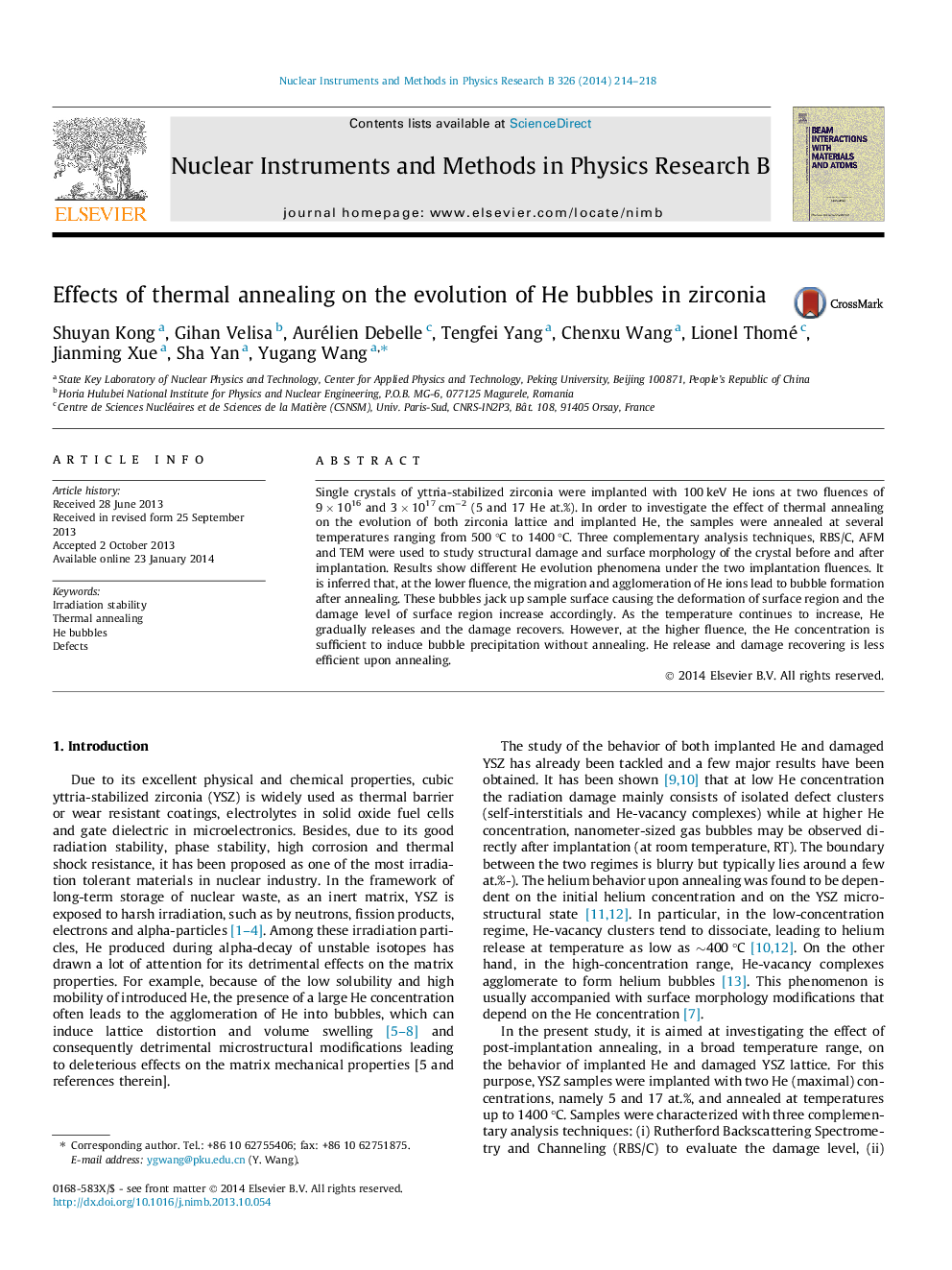| Article ID | Journal | Published Year | Pages | File Type |
|---|---|---|---|---|
| 1681053 | Nuclear Instruments and Methods in Physics Research Section B: Beam Interactions with Materials and Atoms | 2014 | 5 Pages |
Single crystals of yttria-stabilized zirconia were implanted with 100 keV He ions at two fluences of 9 × 1016 and 3 × 1017 cm−2 (5 and 17 He at.%). In order to investigate the effect of thermal annealing on the evolution of both zirconia lattice and implanted He, the samples were annealed at several temperatures ranging from 500 °C to 1400 °C. Three complementary analysis techniques, RBS/C, AFM and TEM were used to study structural damage and surface morphology of the crystal before and after implantation. Results show different He evolution phenomena under the two implantation fluences. It is inferred that, at the lower fluence, the migration and agglomeration of He ions lead to bubble formation after annealing. These bubbles jack up sample surface causing the deformation of surface region and the damage level of surface region increase accordingly. As the temperature continues to increase, He gradually releases and the damage recovers. However, at the higher fluence, the He concentration is sufficient to induce bubble precipitation without annealing. He release and damage recovering is less efficient upon annealing.
